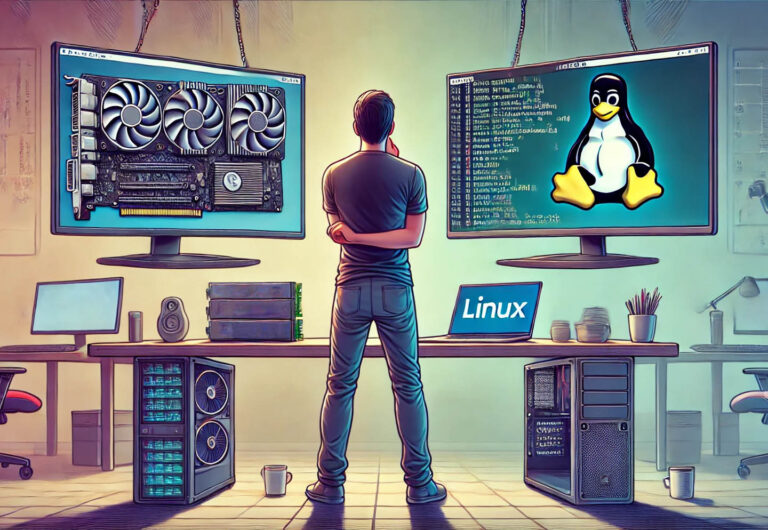Upgrade Hardware or Upgrade to Linux?

Windows 10 support runs out in 2025, and Stefan Bohn was challenged with a decision: “Will I upgrade my hardware or switch my operating system?” As he is working in IT, he opted to listen to the suggestions of his coworkers and give Linux a try. This article covers how he upgraded to Linux, and how he feels about the switch.
The Windows are now closed
I have been a lifelong Windows user. From the release of Windows 3.11, every PC I had ran a Windows operating system. The most prominent reason for that was me being an avid gamer. Linux and other operating systems were not as compatible with games at the time (at least not the ones I loved and played with my friends.) So I didn’t even think twice about which OS to use. Windows was always my go-to option.
This however changed over the course of 2022 to 2023. Windows 11 was released and it needs a TPM to run on a PC. My (10 year old) PC however, while being more than just capable of running all the programs I need it to run, neither has TPM nor can one be installed.
So this time a switch to Windows 11 was not an option.
Windows 10 users will no longer receive security updates from October 2025, and having neither the money nor the need to buy a new PC with the newest hardware (my good ol’ tower still suffices for all my needs as already stated) I didn’t want to buy new hardware just for the sake of the operating system.
So there was only one choice: Upgrade to Linux!
Mint is delicious – Cinnamon not so much
Deciding to use Linux was probably easier for me than it is for other people. That is mostly because I work in IT. I know some basics of using Linux as well as knowing some distributions and the difference between rolling releases and stable updates. This time it is different however, because it is the first time I will use it on my personal hardware.
I wanted to get a distribution my wife could use as well, which is stable and offers some easy ways to install new applications. After using a distro chooser it became clear very early that Linux Mint would be the distribution of choice.
I got a new hard drive and installed Linux on it. Mint was quite easy to install and I could get to work instantly.
The first steps on any new OS for me are customizing it to my very needs though. And I was disappointed at first, because Cinnamon is not as customizable as I hoped it would be.
But luckily with Linux, this is not a problem: After a quick search on the internet I found KDE and also a community posting and video which told me how to easily get rid of Cinnamon and install KDE. Relatively quickly I got a Desktop, fully customizable down to the loading splash screen. Unthinkable on a Windows OS!
It’s glittering – But is it gold?
The first steps on my new Linux Mint DE with KDE were great.
After customizing my desktop, I tried getting the applications I am mostly using on my computer to run, which are:
- Games: Mostly on Steam, but also other platforms
- Digital Audio Workstation: I am using FL Studio to record and produce
- Taxes: I need some support with that and have been using the same application for several years now
- Cloud Provider: I store my data in a cloud located in Germany
Now some might think: “What about office programs like Word or Excel?” To this question I can answer: LibreOffice is just the thing! Does it offer the same functionalities Microsoft Applications do? Not entirely, but if you are not a power user they are a very good replacement I find, and many Microsoft applications such as Office 365 can still run in-browser on a Linux machine. It takes a little bit of time getting used to it, but it quickly becomes as natural as using any Microsoft Office program.
Now, on to the results of trying to get my most used applications up and running:
Games
A lot of games on Steam work. Steam provides ProtonDB, and even games that do not run natively on Linux can be played at quite a good performance. The games I play are mostly titles that do not rely on graphics very heavily though, so I cannot guarantee power-hungry games run just as smoothly.
However, if you are trying to play Blizzard Activision games, the only way is through WinE (Windows Emulator) and it is very rough around the edges. The titles run, but I had some problems from missing hotkeys to the application crashing completely.
Digital Audio Workstation (DAW)
You need WinE for this as well. But especially with larger projects there are performance issues, my DAW acrashed from time to time.
There are alternatives (like Ardour), but I do not want to miss some of the features FL Studio offers as well as the workflow I built.
Taxes
I got my application to run through WinE, but I did not declare my taxes with it. It felt unstable and since taxes are a serious matter, I did not dare relying on the application.
Cloud Provider
My provider has a Linux-compatible application option. I had to include a repository to get it installed, but then it ran smoothly, reliably, and I never had problems with it!
One Window closes, another one opens
Relying on the specific applications mentioned above, it turns out I had no choice but to keep using Windows somehow.
There were two ways I could have gone about it:
- Grub (the Linux Bootloader) offers a dual-boot option. I could install a Windows system in parallel and boot it up whenever I need one of my not-yet-Linux-ready applications
- I could use VirtualBox to set up Windows as a Virtual Machine
There were upsides and downsides to both options. I could only use the dual boot option safely until Windows 10 support runs out. On the other hand virtualizing Windows 10 would use a lot of performance, since I basically run two operating systems on the same hardware and the applications on top of that (which would be a problem at least for the DAW and some games).
As of right now I opted for the first option, which was easy to set up and will get me through the next month until I have to make a final decision on how to proceed.
Thoughts on my Upgrade
Switching from Windows to Linux was definitely an Upgrade for me. The customization options as well as control over my operating system through the CLI feel very nice compared to Windows. I like using Mint as my daily operating system, since it even seems to perform better than Windows.
I still have to use Windows for some of my regular tasks, as written above the applications I usually use for my hobbies seem to run more smoothly and reliably on Windows and sadly there are no alternatives. I invested a lot of time into getting proficient and I don’t want to start anew with other applications just yet.
I hope this changes in the future though and either WinE gets so good you don’t even realize the application you are using is running on an emulated system; or there are even better options for me to use the applications I am used to in an environment, i.e. operating system, I like. Maybe you can carry the torch and contribute to these open source projects after your very own Upgrade to Linux!
